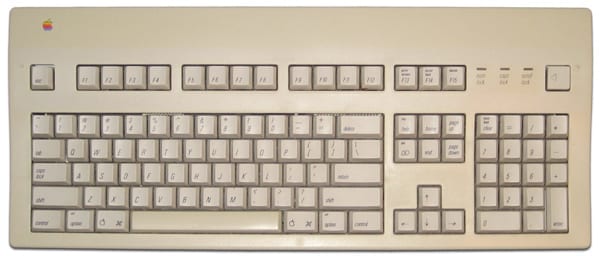 Due to a recent transfer of old files at home, I came across an old email from my days in radio. One of the producers at the radio station I had been interning at had a problem. All the production studio computers were Macs, but he needed something to play on a Windows machine. He’d followed the instructions I’d laid out for him several months prior, but claimed that it completely refused to work on that Windows box. I had him send me the file, and once I received it, I didn’t even need to open the file to know what the problem was.
Due to a recent transfer of old files at home, I came across an old email from my days in radio. One of the producers at the radio station I had been interning at had a problem. All the production studio computers were Macs, but he needed something to play on a Windows machine. He’d followed the instructions I’d laid out for him several months prior, but claimed that it completely refused to work on that Windows box. I had him send me the file, and once I received it, I didn’t even need to open the file to know what the problem was.
Like many Mac users, he hadn’t really given thought to the file extension, those sometimes cryptic letter combinations preceded by a dot at the end of most file names. While these file names are often invisible, and sometimes optional, under OS X, they are a necessity when trying to open them under Windows.
If you’re going to be sharing your files with a Windows or Linux user (and if you’re on the Internet, you likely will – in one form or another) here are couple things you can do to make sure your shared documents are readable.
First, make sure your file extensions are all visible. You can do this by going to Finder > Preferences, clicking the “Advanced” tab and making sure “Show all file extensions” is checked.
Second, when sending the files, make sure they’re ones the recipient can view. Plain text (.txt) and Rich Format text (.rtf) are fairly easy to read, as are most Microsoft Office documents (.doc, .xls, .ppt), though you want to make sure to use common fonts for the documents, so they lay out right. TextEdit allows you to both read and write plain text, rich text, and Word-compatible documents, at least on a basic level. Apple’s iWork suite can open and save to their Office counterparts but, again, the transfer is not quite perfect. The same goes for the open source Open Office suite. If you find yourself doing a lot of transfer of Office documents, your best bet will be to bite the bullet and purchase Office for Mac. This will solve much of the document transfer problem.
Graphic-wise, common file formats seen on the Web (such as .gif, .jpg and .png) and in printing (such as .eps, .tiff and .pdf) should have no problems transferring. Files from specific programs (such as most Adobe applications) often work just fine with the Windows version as well, so if your recipient has Photoshop, then sending a .psd should give you no trouble.
Music and video is considerably much more tricky. If the recipient’s computer has Quicktime for Windows installed, then anything that plays on your Mac should play for them. If they don’t, then you’ll want to use something fairly common, like .mp3 files for audio and .mp4 for videos. QuickTime Pro can perform conversions to both these types.
Even if all you use are Macs, its not a bad idea to get in the habit of using Windows naming conventions. After all, you never know when you’re going to need it.









Hi James and thanks for the comment. We’re taking steps to improve those two aspects. There was some aspects to this particular video that were related to the “issues” you noted. No need to explain here…and actually both our comments are in the wrong post! In any event, is good to show we are transparent, show all comments, and act on input when possible.
Hope to “see” you here more often!
Re: Video – Removing the Optical Drive tray bezel.
Two problems:
1. The introductory material is perceptibly louder than the presentation.
2. The “Your is ready” trailer shows the bezel still in place.
I consider the first just careless and the second a continuity “oops.